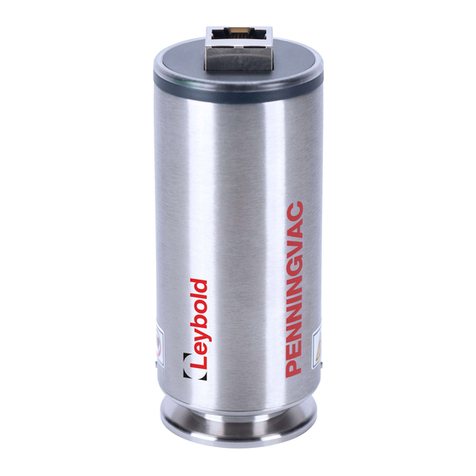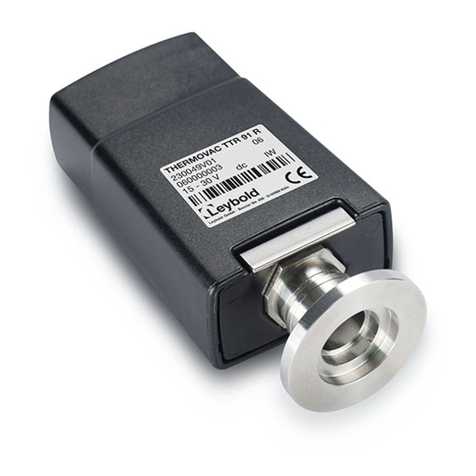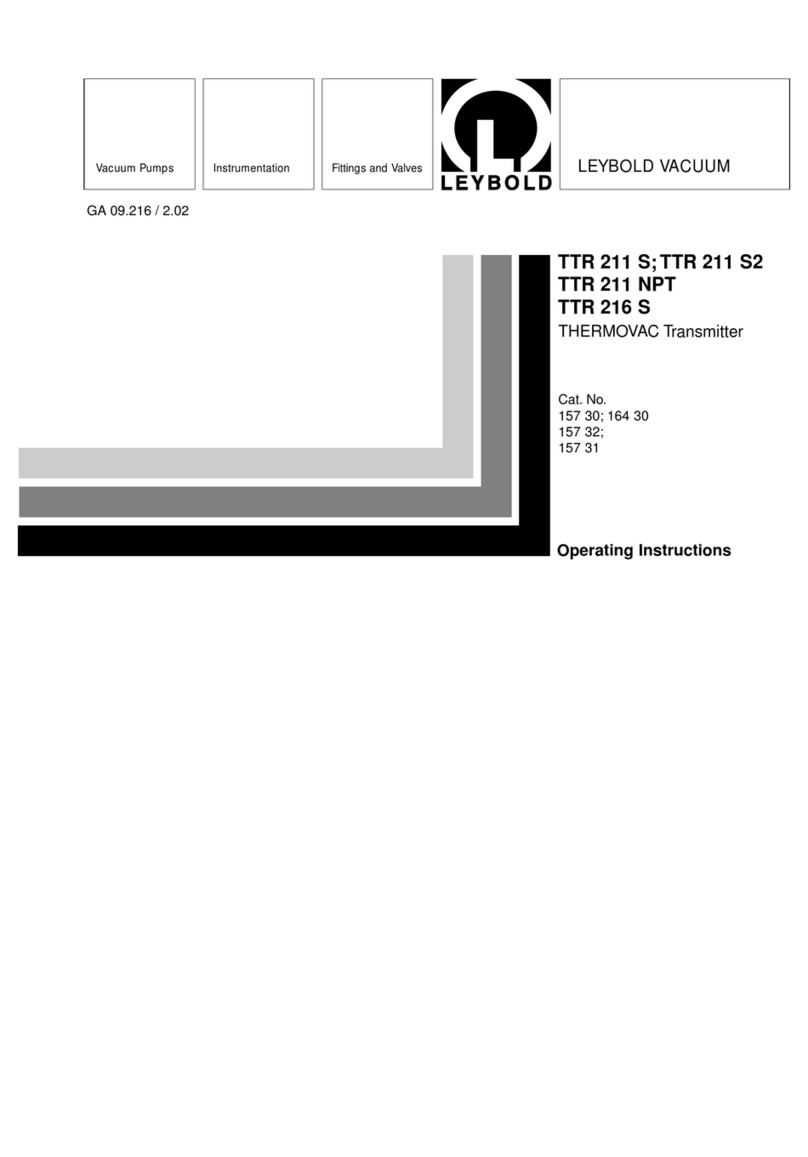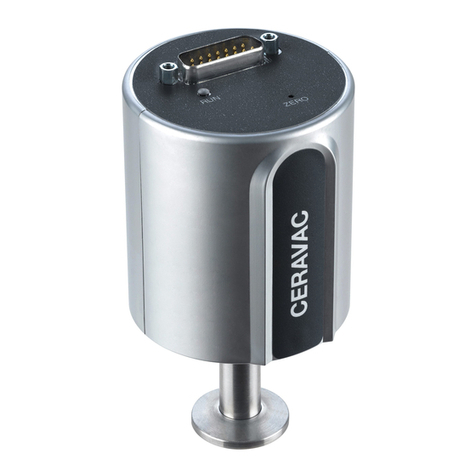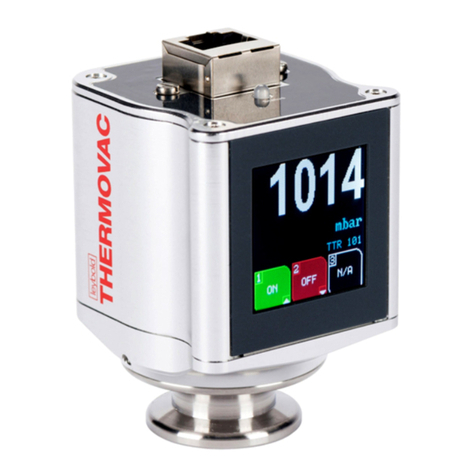
Contents
4GA09420_002_C0 – (2016-10) – Leybold
Contents
Product Identification 2
Validity 2
Intended Use 2
Functional Principle 3
1Safety 5
1.1 Symbols Used 5
1.2 Personnel Qualifications 5
1.3 General Safety Instructions 6
1.4 Liability and Warranty 6
2Technical Data 7
3Installation 12
3.1 Vacuum Connection 12
3.1.1 Making the Flange Connection 13
3.1.2 Removing and Installing the Electronics Unit 14
3.1.3 Using the Optional Baffle 15
3.2 Electrical Connection 17
3.2.1 Use With Leybold Transmitter Controllers 17
3.2.2 Use With Other Controllers 18
3.2.3 Using the Optional Power Supply (With RS232C Line) 23
4Operation 25
4.1 Measuring Principle, Measuring Behavior 25
4.2 Operational Principle of the Transmitter 27
4.3 Putting the Transmitter Into Operation 27
4.4 Degas 27
4.5 Display 28
4.6 RS232C Interface 29
4.6.1 Description of the Functions 29
4.7 Profibus Interface (ITR 90 P) 32
4.7.1 Description of the Functions 32
4.7.2 Operating Parameters 33
4.8 Switching Functions (ITR 90 P) 34
4.8.1 Setting the Switching Functions 34
5Deinstallation 36
6Maintenance, Repair 37
6.1 Maintenance 37
6.1.1 Cleaning the Transmitter 37
6.2 Adjusting the Transmitter 37
6.2.1 Adjustment at Atmospheric Pressure 37
6.2.2 Zero Point Adjustment 39
6.3 What to Do in Case of Problems 39
6.4 Replacing the Sensor 41
7Options 43
8Spare Parts 43
9Storage 43
10 Returning the Product 44
11 Disposal 44
Appendix 45
A: Relationship Output Signal – Pressure 45
B: Gas Type Dependence 46
C: Literature 48
Declaration of Contamination 49
For cross-references within this document, the symbol (→XY) is used, for cross-
references to further documents, listed under literature, the symbol (→[Z]).
